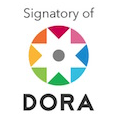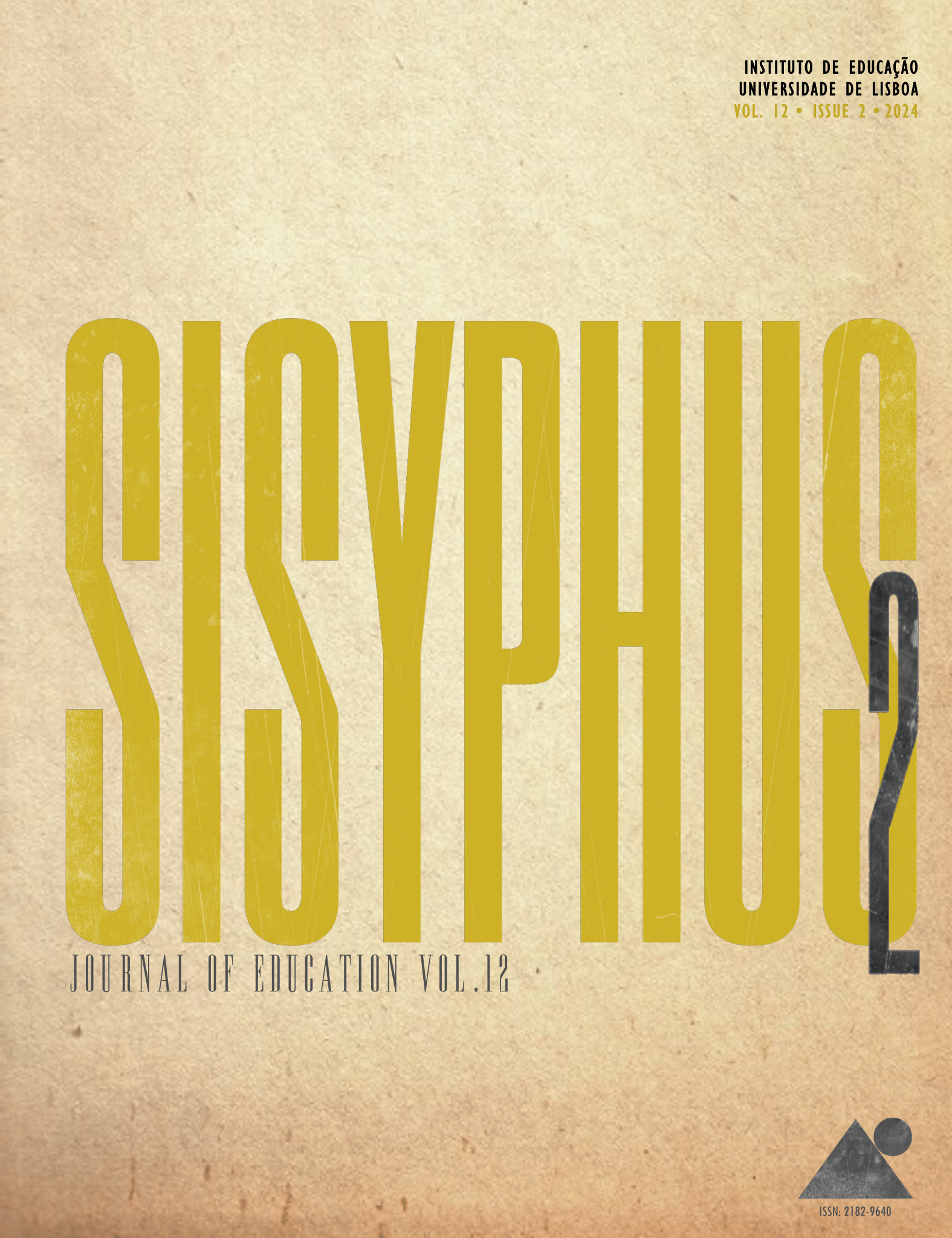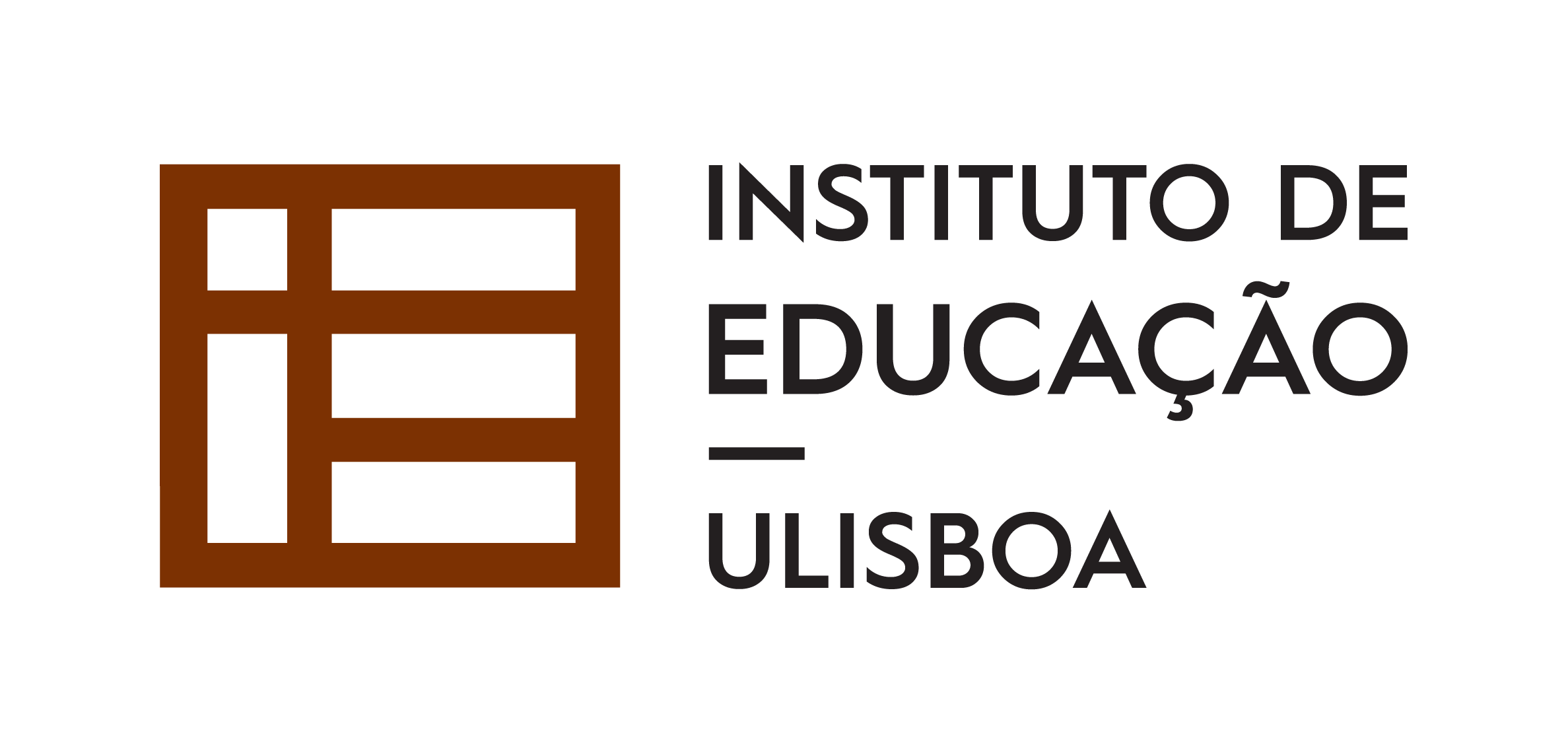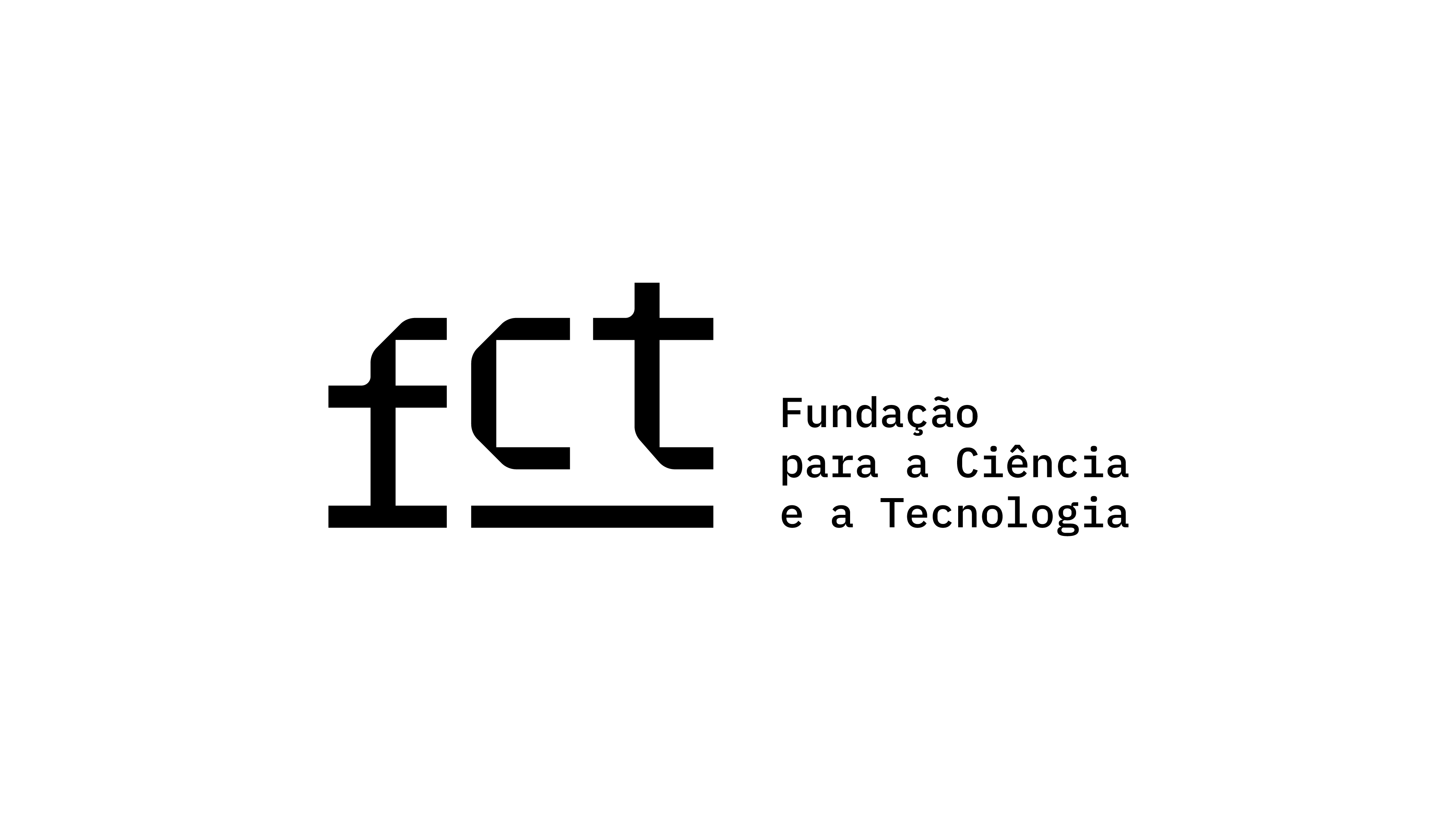The Voice of Higher Studies in Performing Arts’ Students (Music, Dance and Dramatic Art)
DOI:
https://doi.org/10.25749/sis.32930Keywords:
performing arts, professional development, artistic education, student thinkingAbstract
This paper presents the exploratory results of a research whose objective is to know the thinking of students of higher studies in performing arts (AAEE) in Spain, on the variables: training received, purpose of these centers, AAEE curriculum, thoughts about the teaching staff, satisfaction with equipment and resources, status of the centers and social valuation, knowledge, and support for the AAEE and their studies. The sample consisted of 290 subjects. An ad hoc questionnaire validated by judges was used. The results show that the hypothesis, which suggested significant differences between specialities (Music, Dance, Dramatic art) is only confirmed in three variables. And regarding gender in two variables. Significant differences are also found with respect to buildings, facilities, and resources. The importance and need to carry out studies that help profile these professions as well as develop plans to improve the centers are highlighted.
Downloads
References
Adidya, M. C. P. (2024). Level of student satisfaction with learning performing arts management courses. Education, Social science and Planning technique, 13(01).
Archibald, M. M., Makinde, S., & Tongo, N. (2024). Arts-Based Approaches to Priority Setting: Current Applications and Future Possibilities. International Journal of Qualitative Methods, 23. https://doi.org/10.1177/16094069231223926
Barone, T., & Eisner, E. W. (2011). Arts Based Research. Sage Publications.
Belliveau, G., & Graham, W. L. (2016). Research-Based Theatre. An Artistic Approach to Research. Intellect Ltd.
Benn, T. (2003). Reflections on a Degree Initiative: The UK's Birmingham Royal Ballet dancers enter the University of Birmingham. Research in Dance Education, 4(1), 5-16. https://doi.org/10.1080/14647890308304
Bernhard, H. C. (2007). A survey of burnout among university music faculty. College Music Symposium. https://symposium.music.org/index.php/47/item/2238-a-survey-of-burnout-among-university-music-faculty
Blanque, E. (2020). Perfil del alumnado de enseñanzas profesionales de danza de Andalucía: factores sociales, motivacionales y académicos. (Tesis doctoral). Universidad de Granada, España. http://hdl.handle.net/10481/62279
Blevins, P., Erskine, Sh., Moyle, G., & Hopper, L. (2020). Student and teacher attitudes towards overtraining and recovery in vocational dance training. Theatre, Dance and Performance Training, 11(1), 5-24. https://doi.org/10.1080/19443927.2019.1637369
Bracey, L. (2004). Voicing connections: an interpretive study of university dancers’ experiences. Research in Dance Education, 5(1), 7-24. https://doi.org.10.1080/1464789042000190852
Butterworth, J. (2004). Teaching choreography in higher education: a process continuum model. Research in Dance Education, 5(1) 45-67. https://doi.org/10.1080/1464789042000190870
Caballero, M. (2019). Danza y medios de comunicación. De la ausencia a lo posible. Red Escénica, 10. https://www.redescenica.com/danza-y-medios-de-comunicacion-de-la-ausencia-a-lo-posible/
Caldevilla, D. (2011). Presencia del teatro en los medios de comunicación españoles como forma de promoción. Área abierta, 29, 1-23. https://dialnet.unirioja.es/servlet/articulo?codigo=4490409
Campillay, M., & Retuerto, I. (2023). La carrera de Artes Escénicas ante la estandarización de la educación superior. (pensamiento), (palabra)... Y oBra, 29, 6-22. https://doi.org/10.17227/ppo.num29-16987
Caride, J. A., & Vieites, M. F. (2022). Las enseñanzas superiores de arte dramático en el sistema educativo español: mirando al pasado para construir futuros. Historia de La Educación, 41(1), 149-175. https://doi.org/10.14201/hedu2022149175
Cha, D-J., & Amrein-Beardsley, A. (2023). A survey research study of music education faculty: Demographics as related to indicators of job satisfaction and stress. International Journal of Music Education, 42(2), 178-190. https://doi.org/10.1177/02557614231164652
Curl, G. (2005). The critical and the appreciative attitudes to dance in education. Research in Dance Education, 6(1-2), 53-64. https://doi.org/10.1080/14617890500064522
Fernández-Morante, B., De Paula, F., & Blanco-Piñeiro, P. (2021). Profesionales de la psicología como docentes en los conservatorios de música: hacia una educación musical sostenible. Papeles del Psicólogo / Psychologist Papers, 42(1), 38-45. https://dx.doi.org/10.23923/pap.psicol2021.2949
Freakley, V., & Neelands, J. (2003). The UK Artist's World of Work. Research in Dance Education, 4(1), 51-61. https://doi.org/10.1080/14647890308305
Galindo, D. (2015). Inteligencia emocional y personalidad de los alumnos de Arte Dramático: ¿Qué los define como actores y directores? (Tesis doctoral). Universidad de Murcia, España. http://hdl.handle.net/10201/47060
Galindo, D. (2019). Labor investigadora en ESAD Murcia. Trabajos fin de estudios (2014-2018). Fila á. Revista científica de artes escénicas y audiovisuales, 3, 57-70. https://dialnet.unirioja.es/servlet/articulo?codigo=7819089
García-Dantas, A., & Caracuel, J. C. (2011). Factores que influyen en el abandono del alumnado de un conservatorio profesional de danza. Revista Iberoamericana de Psicología del ejercicio y del deporte, 6(1), 79-96. https://www.riped-online.com/articles/factors-that-influence-students-dropping-out-of-a-danceconservatory.pdf
Gil, M. F. (2016). Estudio de la satisfacción de los estudiantes de Interpretación Textual de la Escuela Superior de Arte Dramático de Córdoba. Revista Complutense de Educación, 27(2), 725-740. https://doi.org/10.5209/rev_RCED.2016.v27.n2.47940
Hernández-Nieto, R. A. (2002). Contributions to Statistical Analysis. Universidad de Los Andes.
Higdon, R., & Stevens, J. (2017). Redefining employability: student voices mapping their dance journeys and futures. Research in Dance Education, 18(3), 301-320. https://doi.org/10.1080/14647893.2017.1370451
Irwin, R. L., Beer, R., Springgay, S., Grauer, K., Xiong, G., & Bickel, B. (2006). The Rhizomatic Relations of A/r/tography. Studies in Art Education, 48(1), 70-88. http://www.jstor.org/stable/25475806
Laferrière, G. (1997). La pedagogía puesta en escena. Ñaque.
Leavy, P. (2018). Handbook of Arts-Based Research. The Guilford Press.
LeBlanc, N., Davidson, S. F., Ryu, J., Rita, L., & Irwin, R. L. (2024). Becoming through a/r/tography, autobiography and stories in motion. International Journal of Education Through Art, 20, 69-89. https://doi.org/10.1386/eta_00152_1
Ley por la que se regulan las Enseñanzas Artísticas Superiores y se establece la organización y equivalencias de las Enseñanzas Artísticas Profesionales, de 13 de marzo de 2024. https://www.congreso.es/public_oficiales/L15/CONG/BOCG/A/BOCG-15-A-5-5.PDF
López-Lorente, J. L. (2015). Salidas profesionales de los egresados en enseñanzas musicales y de danza. In C. Cabedo, R. Juncos & J. P. Valero (Eds.), Las enseñanzas de Música y Danza en la Comunidad Valenciana. Marco teórico para su evaluación desde un modelo de cohesión social (pp. 175-181). Generalitat Valenciana.
Loton, D., Stein, C., Parker, P., & Weaven, M. (2022). Introducing block mode to first-year university students: a natural experiment on satisfaction and performance. Studies in Higher Education, 47(6), 1097-1120. https://doi.org/10.1080/03075079.2020.1843150
Martínez, M. L. (2012). El desarrollo de las enseñanzas superiores de arte dramático. Danza y música en la Comunitat Valenciana. Antecedentes históricos, situación actual y perspectivas de futuro. (Tesis doctoral). Universitat de València, España. http://hdl.handle.net/10803/81886
Méndez-Martínez, E., Uría-Uriarte, E., & González. M. (2024). Permission to Cry—Drifts on Research Based Theatre on Top of an Elephant. Arts, 13(2), 45. https://doi.org/10.3390/arts13020045
Mickel, L. (2024). Performance practice as research, learning and teaching. Teaching in Higher Education, 29(2), 489-501. https://doi.org/10.1080/13562517.2021.2000385
Morris, G. (2008). Artistry or mere technique? The value of the ballet competition. Research in Dance Education, 9(1), 39-54. https://doi.org/10.1080/14647890801924550
Motos, T., Giménez-Morte, C., & Gassent, R. (2021). Trabajo de Sísifo. Las artes escénicas en la educación. Academia de Artes Escénicas de España.
Nieves Gil, A. del P., & Llerena Avendaño, A. (2017). La vivencia como principio artísticopedagógico en la formación de licenciados en artes escénicas. PAPELES, 9(18), 56-62. https://doi.org/10.54104/papeles.v9n18.493
Olszewski-Kubilius, P., Subotnik, R., & Worrell, F. (2023). Domain-specific abilities and characteristics: Evolving central components of the talent development megamodel. High Ability Studies, 34(2), 159-174. https://doi.org/10.1080/13598139.2022.2139666
Ordine, N. (2022). La utilidad de lo inútil. (26ª reimpresión). Acantilado.
Pastor, V. (2015). Estudio y análisis de los posibles modelos de gestión y organización de las Enseñanzas Artísticas Superiores en España. ARTSEDUCA, 11, 46-71. https://artseduca.com/wp-content/uploads/2023/06/2022.pdf
Ramírez, K. (2019). Aporte del ejercicio de la metaobservación y el enfoque de la performatividad a la formación teatral. Revista Actos, 1(2), 81-92.
Stern, P. (1983). Investigación sobre el pensamiento pedagógico del profesor, sus juicios y decisiones y conductas. In J. Gimeno Sacristán & A. I. Pérez Gómez (Dirs.), La enseñanza: su teoría y su práctica (pp. 372-420). Akal.
Shin, J. C., & Jung, J. (2014). Academics job satisfaction and job stress across countries in the changing academic environments. Higher Education, 67, 603-620 https://doi.org/10.1007/s10734-013-9668-y
Schön, D. (1998). El profesional reflexivo. Paidós.
Susinos, T., & Ceballos, N. (2012). Voz del alumnado y presencia participativa en la vida escolar. Apuntes para una cartografía de la voz del alumnado en la mejora educativa. Revista de Educación, 359, 24-44. https://doi.org/10.4438/1988-592X-RE-2012-359-194
Tineo, L. (2021). Comunicación y artes escénicas: la estrategia digital en los espacios de exhibición españoles. (Tesis doctoral). Universidad Complutense de Madrid, España. https://hdl.handle.net/20.500.14352/11372
Tsompanaki, E., & Benn, T. (2011). Dance students’ perceptions of tertiary education in England and in Greece. Research in Dance Education, 12(3), 203-219. https://doi.org/10.1080/14647893.2011.614328
Vieites, M. F. (2020). Las enseñanzas artísticas superiores en la ordenación educativa en España. Una visión crítica. Foro de Educación, 18(1), 209-232. https://doi.org/10.14516/fde.676
Vieites, M. F. (2022). Investigación teatral en educación superior: rutas, retos, retornos. Actos, 4(7), 9-28. https://doi.org/10.25074/actos.v4i7.2299
Vieites, M. F., Dapía, M., & Fernández, R. (2015). La inserción laboral de los titulados y tituladas de arte dramático de la ESADg. Revista de Estudios e Investigación en Psicología y Educación, 7, 13-18. https://doi.org/10.17979/reipe.2015.0.07.191
Wong, W. H., & Chapman, E. (2023). Student satisfaction and interaction in higher education. Higher Education, 85, 957-978. https://doi.org/10.1007/s10734-022-00874-0
Downloads
Published
Issue
Section
License
Copyright (c) 2024 Sisyphus — Journal of Education

This work is licensed under a Creative Commons Attribution-NonCommercial 4.0 International License.
Copyright (c) belongs to Sisyphus - Journal of Education. However, we encourage issued articles to be published elsewhere, provided that Sisyphus authorization is asked for and that authors integrate our original source citation and a link to our website.
Author Self-Archiving Policy
Author(s) are permitted to self-archive the final published version in institutional or thematic repositories, and in their personal or institutional websites.
DORA Signer
The Instituto de Educação da Universidade de Lisboa, Sisyphus' Publisher, is a San Francisco Declaration on Research Assessment signer.






